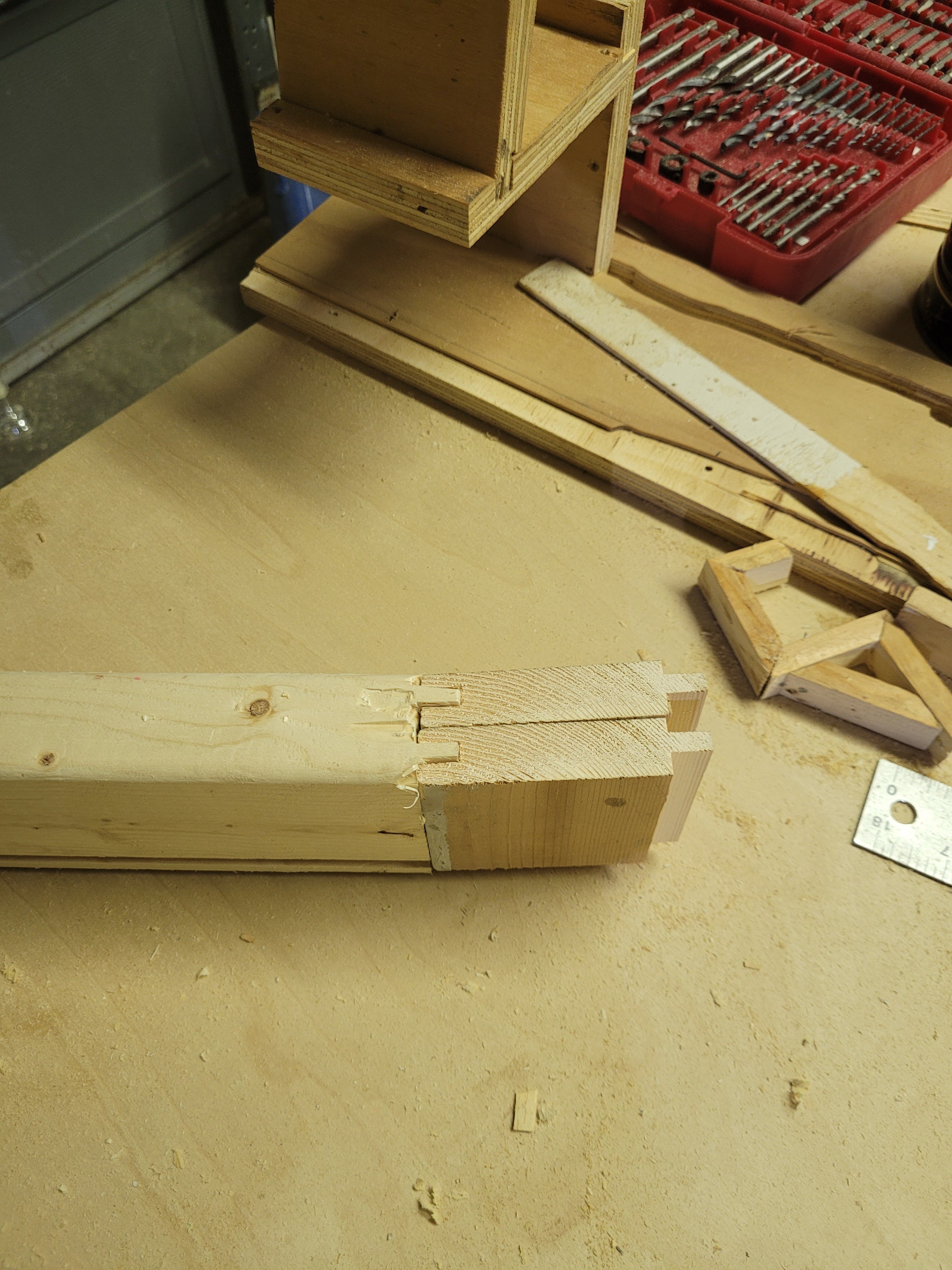this post was submitted on 28 Sep 2024
119 points (96.9% liked)
Woodworking
6071 readers
242 users here now
A handmade home for woodworkers and admirers of woodworkers. Our community icon is a planter box made by @Captain Aggravated, the winner of our summer '24 woodworking contest. Congratulations!
founded 1 year ago
MODERATORS
you are viewing a single comment's thread
view the rest of the comments
view the rest of the comments

Being serious for a moment, do you want feedback or am I just clearly missing the joke?
Learning to use the hand router and putting tongues and grooves on all my scrap wood.
That's done by hand router?
Dude, that's legit then. I thought it was a table router when I first scrolled through and was feeling pity. Not so if that's hand router work.
Fucking bonkers trying to use this thing. Gotta make a router table
Can you link a picture of what your hand router looks like?
I have one like this I got from the dump someone set aside.
Thanks, for reference, that's not a hand router. Hand routers are not electric. Look up stanley 71 for a common example.
What you have is standard electric router. There are also compact electric routers (sometimes called trim routers).
Well when I googled hand router only electric came up. Didn't even occur to me there was a non electric version, I assumed it would be all chisel.
Looks cool, but exhausting.
They usually aren't used to remove a bulk of the material. That is done with a chisel usually. They are very good at cleaning up the last surface and sneaking up on a perfect fit.
Tbh, that makes it even more impressive to me. Those suckers are pretty damn hard to control freehand.
The cuts all look fine, but I'm wondering if you want feedback on the joint you made.
Wasnt really a serious joint, just messing around. I'm sure if I slather it in wood glue it could work, but I know it doesn't make sense.
Curious, what were you going to say?
This joint would only be strong if the load was applied along long axis, but doesn't really offer any additional strength over just two flat surfaces in that direction.
In the direction perpendicular to the wide face, the joint is weak due to the direction of the grain in the short pieces. It would be a little stronger than a butt joint, but mostly due to the increased glue surface.
In the last direction, perpendicular to the narrow faces, the joint is nearly the same as a butt joint except it has more glue surface.
If you did want to join two boards with grain in these orientations (and assuming the two short pieces were longer in the direction perpendicular to the bench), then a mortise and tennon or half lap join would be recommended. You can use the router to cut both sides of the half lap, and it could cut the tennon. Without a router table with a good fence, I wouldn't recommend using it to cut a deep mortise.